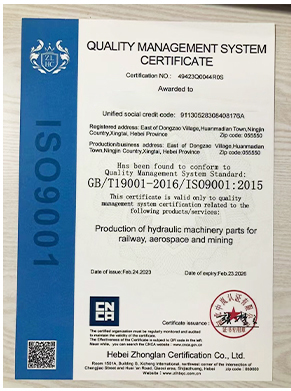- Arabic
- French
- Russian
- Spanish
- Portuguese
- Turkish
- Armenian
- English
- Albanian
- Amharic
- Azerbaijani
- Basque
- Belarusian
- Bengali
- Bosnian
- Bulgarian
- Catalan
- Cebuano
- Corsican
- Croatian
- Czech
- Danish
- Dutch
- Afrikaans
- Esperanto
- Estonian
- Finnish
- Frisian
- Galician
- Georgian
- German
- Greek
- Gujarati
- Haitian Creole
- hausa
- hawaiian
- Hebrew
- Hindi
- Miao
- Hungarian
- Icelandic
- igbo
- Indonesian
- irish
- Italian
- Japanese
- Javanese
- Kannada
- kazakh
- Khmer
- Rwandese
- Korean
- Kurdish
- Kyrgyz
- Lao
- Latin
- Latvian
- Lithuanian
- Luxembourgish
- Macedonian
- Malgashi
- Malay
- Malayalam
- Maltese
- Maori
- Marathi
- Mongolian
- Myanmar
- Nepali
- Norwegian
- Norwegian
- Occitan
- Pashto
- Persian
- Polish
- Punjabi
- Romanian
- Samoan
- Scottish Gaelic
- Serbian
- Sesotho
- Shona
- Sindhi
- Sinhala
- Slovak
- Slovenian
- Somali
- Sundanese
- Swahili
- Swedish
- Tagalog
- Tajik
- Tamil
- Tatar
- Telugu
- Thai
- Turkmen
- Ukrainian
- Urdu
- Uighur
- Uzbek
- Vietnamese
- Welsh
- Bantu
- Yiddish
- Yoruba
- Zulu
Ліст . 10, 2024 07:23 Back to list
Understanding the Benefits and Applications of Cogged Belts in Modern Machinery
Understanding Cogged Belts Features, Applications, and Benefits
Cogged belts, also known as toothed belts or synchronous belts, have become an integral component in various machinery and automotive systems. Characterized by their notched surfaces, these belts are designed to efficiently transfer power between pulleys while maintaining precise timing. Their unique construction allows for a better grip on the pulleys, leading to reduced slippage and improved performance. This article explores what cogged belts are, their applications, and the benefits they offer in different industries.
What Are Cogged Belts?
Cogged belts are a type of power transmission belt equipped with teeth or cogs on their inner surface. These teeth engage with corresponding grooves on the pulleys, facilitating a mechanical connection that allows for synchronized movement. Unlike flat belts, which rely on friction alone to transmit power, cogged belts provide a positive engagement, ensuring the belt remains aligned with the pulley. This design not only enhances the efficiency of power transfer but also prolongs the life of the belt.
Key Features of Cogged Belts
1. Material Composition Most cogged belts are made from high-quality rubber reinforced with materials like polyester or fiberglass. This construction provides the necessary strength and flexibility, allowing them to operate under varying loads and speeds.
2. Precise Timing The teeth on cogged belts ensure that the belt remains in sync with the pulleys, making them ideal for applications requiring precise timing, such as in engine timing systems.
3. Reduced Slippage The positive engagement between the belt teeth and pulley grooves minimizes slippage, enhancing the overall efficiency of power transmission.
4. Lower Noise Levels Cogged belts operate more quietly than traditional flat belts, leading to quieter machinery and improved working conditions in industrial environments.
Applications of Cogged Belts
Cogged belts are utilized in a variety of applications across different sectors
1. Automotive One of the most common uses for cogged belts is in automotive engines, where they synchronize the movement of various components, such as the crankshaft and camshaft. Timing belts are essential for maintaining optimal engine performance.
cogged belt

2. Industrial Machinery In manufacturing settings, cogged belts are used in conveyor systems, where precise control over the movement of materials is crucial. They are also prominent in robots and automated machinery.
3. HVAC Systems In heating, ventilation, and air conditioning (HVAC) systems, cogged belts drive fans and compressors, ensuring efficient airflow and temperature control.
4. Fitness Equipment Many exercise machines, such as treadmills and stationary bikes, utilize cogged belts to ensure smooth and reliable operation.
Benefits of Cogged Belts
The advantages of using cogged belts over traditional belts are numerous
- Increased Efficiency The reduced slippage and precise engagement lead to better energy efficiency, minimizing wasted power during operation.
- Longer Lifespan Due to their robust construction and reduced wear and tear, cogged belts tend to have a longer operational life compared to non-cogged alternatives.
- Less Maintenance Cogged belts require less frequent maintenance, as their design helps prevent common issues associated with wear, such as stretching and misalignment.
- Versatility With various sizes and styles available, cogged belts can be customized to fit a wide range of applications, allowing for broad usability across different sectors.
Conclusion
Cogged belts represent a significant advancement in power transmission technology. Their unique design, characterized by teeth that ensure positive engagement with pulleys, makes them essential in applications requiring precision and reliability. From automotive engines to industrial machinery, cogged belts offer enhanced efficiency, reduced noise, and longer lifespan, making them a preferred choice in various industries. Understanding the features and benefits of cogged belts can help businesses make informed decisions about their power transmission needs, ultimately leading to improved performance and productivity.
-
Korean Auto Parts Timing Belt 24312-37500 For Hyundai/Kia
NewsMar.07,2025
-
7PK2300 90916-T2024 RIBBED BELT POLY V BELT PK BELT
NewsMar.07,2025
-
Chinese Auto Belt Factory 310-2M-22 For BMW/Mercedes-Benz
NewsMar.07,2025
-
Chinese Auto Belt Factory 310-2M-22 For BMW/Mercedes-Benz
NewsMar.07,2025
-
90916-02660 PK Belt 6PK1680 For Toyota
NewsMar.07,2025
-
drive belt serpentine belt
NewsMar.07,2025

